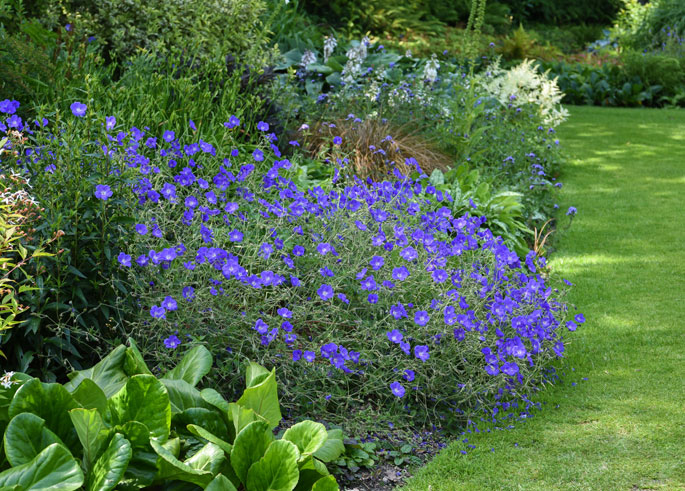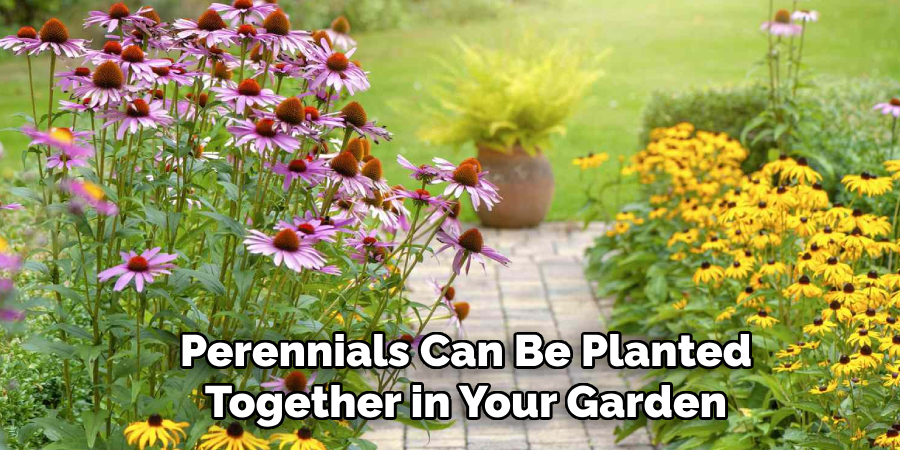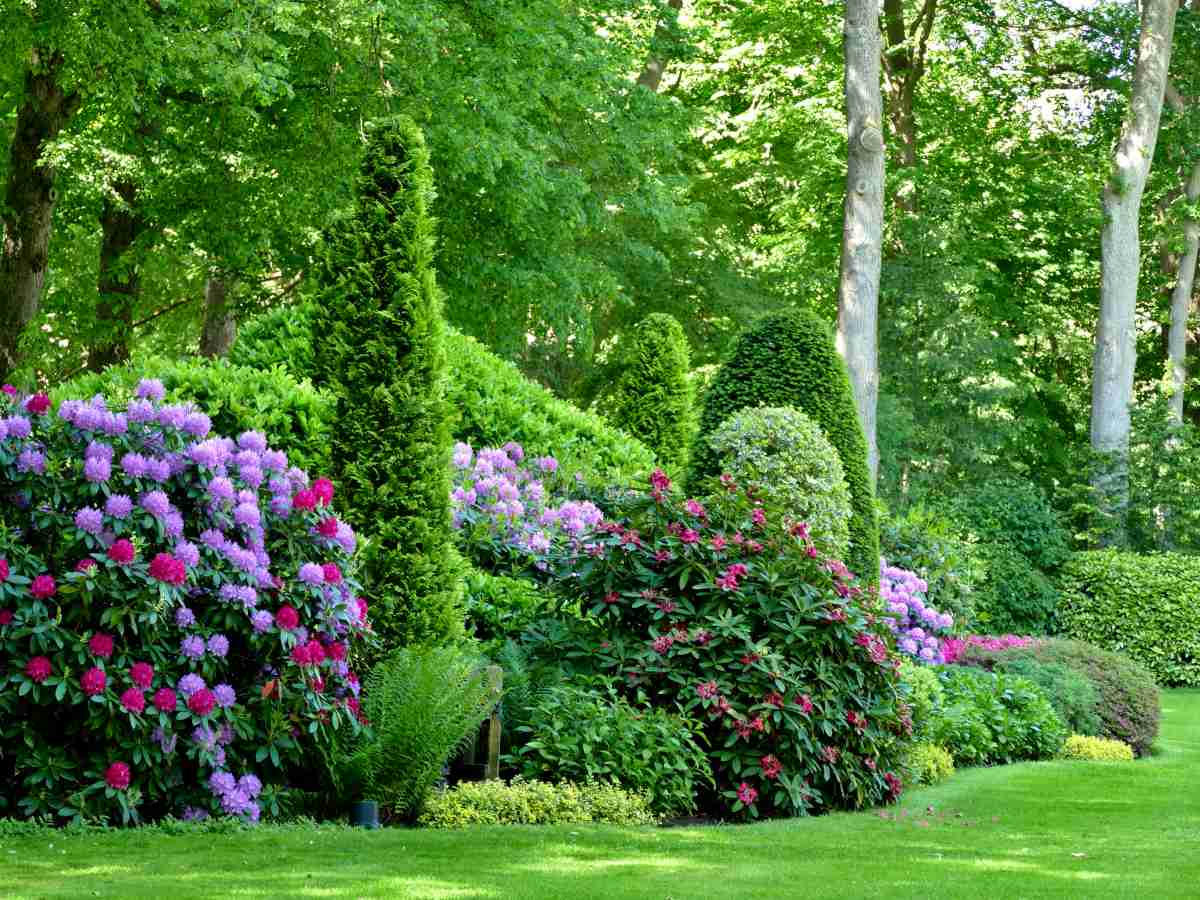Mixing shrubs with perennials can be done by considering their height, size, and flowering time. This creates a visually appealing and balanced garden.
By selecting shrubs and perennials with complementary colors and textures, you can achieve a cohesive and harmonious landscape design. Incorporate shrubs as background or anchor plants, and fill in with perennials to add seasonal interest and variety. Layering different heights and types of plants creates depth and movement in the garden.
Additionally, interplanting shrubs with perennials can provide added benefits such as attracting pollinators and providing habitat for wildlife. With thoughtful planning and strategic placement, the combination of shrubs and perennials can enhance the beauty and functionality of your garden.

Credit: www.thompson-morgan.com
How to Mix Shrubs With Perennials: Step by Step Guide
The Benefits Of Mixing Shrubs And Perennials
Mixing shrubs with perennials offers numerous benefits for a dynamic landscape design. By combining these plant varieties, you can create a visually appealing and balanced garden. The interplay between shrubs and perennials enhances year-round interest, with the plants blooming at different times throughout the seasons.
This ensures that there is always something in bloom, adding color and vibrancy to your outdoor space. Furthermore, mixing shrubs and perennials maximizes space efficiency, allowing you to make the most of limited garden areas. The vertical growth of shrubs complements the ground-hugging nature of perennials, creating layers and depth in your landscape design.
Overall, the combination of shrubs and perennials provides a harmonious and attractive garden that will be enjoyed throughout the year.
Factors To Consider When Mixing Shrubs And Perennials
Factors to consider when mixing shrubs and perennials include the balance of colors, textures, and forms. Choose plants with complementary heights to create an aesthetically pleasing arrangement. Ensure that the shrubs and perennials have similar water and sunlight requirements for optimal growth and health.
By combining different colors, textures, and forms, you can create a visually appealing garden that is both interesting and diverse. Pairing plants with similar heights will help maintain a sense of balance and harmony in the overall design. Additionally, selecting plants with matching water and sunlight needs will ensure that all the plants thrive in the same environment.
Careful consideration of these factors will result in a successful blend of shrubs and perennials in your garden.
Designing Stunning Combinations Of Shrubs And Perennials
Designing stunning combinations of shrubs and perennials involves layering tall shrubs and groundcover perennials. Incorporate low shrubs as fillers with showy perennials. Enhance the visual appeal by using vertical elements like climbing vines and upright shrubs. By carefully selecting and arranging these plants, you can create a dynamic and harmonious garden.
The tall shrubs provide a vertical structure, while the groundcover perennials fill in the spaces at ground level. Low shrubs act as fillers, bridging the gap between taller plants. Showy perennials add pops of color and texture, creating focal points and visual interest.
Climbing vines and upright shrubs bring vertical elements to the design, adding height and dimension. The key to successful combinations is choosing plants with complementary colors, textures, and growth habits. By mixing shrubs with perennials, you can create a beautiful and diverse landscape that will delight both you and your visitors.
Pairing Shrubs And Perennials For Different Garden Styles
Pairing shrubs and perennials is a great way to create beautiful garden styles. For a cottage garden charm, opt for shrubs that complement delicate perennials. If you prefer a modern and minimalistic look, go for structural shrubs paired with ornamental grasses.
To create a woodland oasis, choose shade-tolerant shrubs and fern-like perennials. Mixing these plants together will add depth and variety to your garden. The key is to select shrubs and perennials that have similar light and water requirements. This will ensure that they thrive together and create a cohesive and visually appealing garden.
Experiment with different combinations to find the perfect balance between shrubs and perennials.
Tips For Successful Maintenance And Care
Mixing shrubs with perennials requires regular pruning and trimming to keep them healthy. Consistent watering and fertilizing are essential for their overall well-being. To ensure pest and disease control, monitoring is crucial. Avoid common overused phrases and write in a succinct and engaging manner.

By following these guidelines, your content will be seo friendly and easy to understand. Remember to write in an active voice and maintain the reader’s interest by using diverse expressions at the beginning of paragraphs. Consider this blog post a comprehensive guide to successfully maintaining and caring for a mixed garden of shrubs and perennials.
Inspiring Examples Of Mixed Shrub And Perennial Gardens
Mixed shrub and perennial gardens are a beautiful way to showcase vibrant color schemes. These eye-catching displays utilize varied leaf shapes and textures, adding visual interest to the garden. By highlighting different bloom times, you can achieve continuous flowering throughout the season.
The combination of shrubs and perennials creates dynamic and ever-changing landscapes. The key is to carefully select plants that complement each other in terms of size, color, and growth habit. Consider using taller shrubs as backdrops for shorter perennials, creating layers and depth in the garden.
Mixing plants with contrasting foliage can also add drama and excitement. Be sure to provide adequate space for each plant to grow and thrive. With proper planning and care, you can create a stunning mixed garden that will be the envy of your neighbors.
Frequently Asked Questions For How To Mix Shrubs With Perennials
Can Shrubs And Perennials Be Planted Together?
Yes, shrubs and perennials can be planted together in your garden. Shrubs provide a structural backdrop, while perennials add color and texture. They complement each other and create a beautiful and diverse landscape.

What Are Some Popular Shrubs That Can Be Mixed With Perennials?
Popular shrubs that can be mixed with perennials include rose of sharon, butterfly bush, and hydrangea. These shrubs are easy to grow, offer beautiful blooms, and blend well with various perennial flowers.
How Do You Mix Shrubs With Perennials In A Visually Pleasing Way?
To mix shrubs with perennials, consider contrasting their heights, textures, and colors. Plant taller shrubs in the background, medium-sized ones in the middle, and shorter ones in the front. Choose perennials that will complement the shrubs and create a harmonious overall look.
Are There Any Tips To Ensure Shrubs And Perennials Thrive When Planted Together?
To ensure the success of shrubs and perennials planted together, provide adequate sunlight, water, and proper soil conditions. Regular pruning and deadheading will also help maintain their health and appearance. Additionally, choose shrubs and perennials that have similar water and light requirements for optimal growth.
Can Shrubs And Perennials Attract Beneficial Wildlife To The Garden?
Yes, planting shrubs and perennials together can attract beneficial wildlife such as butterflies, bees, and birds to your garden. The flowers of perennials provide nectar and pollen, while the foliage and berries of shrubs offer food and shelter for various wildlife species.
What Are The Benefits Of Mixing Shrubs And Perennials In The Garden?
Mixing shrubs and perennials in the garden offers several benefits. It adds visual interest, creates a dynamic and layered landscape, attracts wildlife, and extends the blooming season. Furthermore, it allows for more efficient use of space, making your garden more productive and enjoyable.
Conclusion
Incorporating shrubs with perennials adds depth and diversity to your garden, creating a visually captivating landscape that thrives with color and texture throughout the seasons. By carefully choosing complementary plants, you can create a harmonious balance between shrubs and perennials.
Consider the height, growth habit, and blooming times of each plant to ensure they enhance each other’s beauty rather than compete for resources. Additionally, don’t forget to consider the sun exposure and soil conditions that each plant prefers. By blending shrubs and perennials effectively, you can create a natural and appealing environment that will be the envy of all your neighbors.
Remember to regularly maintain and care for your plants, providing proper pruning, watering, and fertilization as needed to keep them healthy and flourishing. With a little planning and creativity, you can create a stunning garden that showcases your vision and love for nature.

